Using nitrogen to displace oxygen in water-based fire protection systems such as dry, preaction, and even wet systems has become the fire protection industry's accepted standard to prevent corrosion.
With any corrosion monitoring process, it is important to verify that you're achieving the desired results. When it comes to nitrogen inerting, you can accomplish this by verifying that you have successfully attained the target rate of 98% nitrogen purity throughout the entire pipe network.
To verify the purity of the nitrogen, take manual gas sample readings from a handheld gas analyzer attached at sample points located throughout the system, or use a permanent gas analyzer that continuously monitors the gas composition at a fixed point on the system.
Sprinkler System Characteristics
To effectively monitor gas composition, it's important to understand the unique operating characteristics of a fire sprinkler system. Fire sprinkler systems are constructed with pipe and designed to move water from one place to another, which would lead one to envision a point-to-point transmission system (such as a garden hose) where water is introduced at one end and has only one flow path to exit at the opposite end.
In reality, fire sprinkler systems are complex pipe networks that should be treated more like stagnant vessels (i.e. a tank) than transmission lines. While gas can be sampled from any point in the system, the readings can vary significantly depending on how the nitrogen is introduced into the system.
How to Get the Right Mixture
To achieve a homogeneous gas mixture in a fire sprinkler system it is necessary to employ a system such as the ECS Fill and Purge method, which uses pressure cycling to ensure that nitrogen gas is introduced into all areas of the pipe network.
By varying the pressure in the pipe network by 3-5 psig, the nitrogen is pushed into all the dead-ends of the pipe system during the pressurization cycle, where it mixes with oxygen. The mixed gas is then pulled out towards the vent during the depressurization cycle, which removes the oxygen from the system.
Using the ECS Fill and Purge method of inerting a fire sprinkler system - which actively mixes the gas throughout the entire pipe network - allows the vent to be placed at any location on the system. In ECS systems that location is at the riser above the dry or preaction valve.
A benefit of locating the vent at the riser is that it provides an easily accessible sample point to measure gas purity. Furthermore, when measuring at the riser it allows the gas analyzer to sample the purity of the nitrogen being produced by the nitrogen generator, since it is being introduced into the system during the fill portion of the Fill and Purge breathing cycle. This allows one strategically placed gas analyzer to measure not only the purity of the homogenous mixed gas exiting the system through the vent during the purge portion of the cycle, but also the integrity of the gas being produced by the nitrogen generator.
Interested in learning more about ECS corrosion monitoring systems? Contact our team of experts today with any specific questions you may have.




